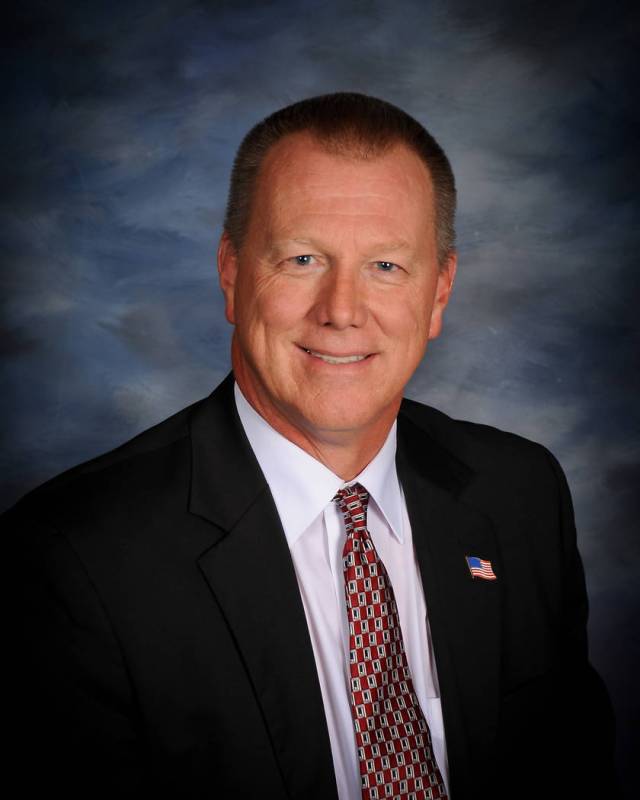
Nye County Schools Superintendent Dale Norton’s functions on behalf of the school district stretched far beyond the boundaries of the district this summer.
Norton headed to Washington, D.C. this summer to advocate on several issues that impact the state of Nevada’s education systems and the Nye school district.
Norton represents the Nevada Association of School Superintendents on the governing board for the national AASA (American Association of School Administrators), the school Superintendents Association. He spoke to members and staffers of Nevada’s congressional delegation about future education funding and current and future policies.
“We (AASA) have a legislative advocacy conference in Washington, D.C. every year,” Norton said. “That group has an advocacy conference there every year. That gives us an opportunity to go sit with our congressman and senators, representatives and have wholesome conversations with them about educational issues.”
Norton was accompanied by Dr. David Jensen, superintendent for the Humboldt County School District, another representative from Nevada for the national chapter of the association of school administrators, during his trip.
School infrastructure
Norton advocated for a better system on the federal level for more resources when it comes to building new schools or investing in improvements during his trip.
Norton explained that districts in the state have to go to public and bond money for new schools.
“There’s no infrastructure state-wise or federal-wise to rebuild our schools without going to a bond,” he said.
But, some counties have no bonding capacities in the state, he said.
Norton said that he was asking representatives during his trip to Washington to “look at taxes at how we can put money toward” counties that no longer have a capacity to build new buildings for school districts.
Norton spoke about the Humboldt County School District’s buildings, where Jensen is the superintendent.
“The median age of his schools in Humboldt is 58 years old,” Norton said.
The last time Humboldt County did a building project was about 2004-05, according to Norton.
“And they have no bonding capacity either to put some schools in place, and he’s got buildings that are over 58 years old,” Norton said.
The Nye County School District also has buildings that are becoming more mature. Norton said they have buildings that date back to 1955 in the district, in Gabbs, portions of Tonopah and in Duckwater.
“We’re in that position right now,” Norton said. “That’s one of the reasons we moved the middle schoolers up to the high school in Tonopah, because we had the space and the facilities, at least newer facilities to put them in. We’re kind of shutting down some of those 1955 buildings because there’s just so much money that you have to put into them that we don’t have the capacity to do that with.”
“So, we’re asking our federal constituents to support, at the federal level, some way of putting in some sort of mechanism in place, that places could apply for or request funding to build schools or repair schools,” he said.
Norton said work needs to be done at the state level, too.
“But in light of what’s going on in our state right now, that’s going to be way out of the picture,” he said.
The American Association of School Administrators is supporting two vehicles to improve funding for new schools and refurbishment, according to literature from the organization.
Some of that legislation includes the Taxpayer Certainty and Disaster Relief Act of 2019, introduced in the U.S. House of Representatives in 2019. The organization is also supporting the Rebuild America’s School Act, which was introduced in the House and in the U.S. Senate in 2019.
Teacher shortage
Norton also talked about the Higher Education Act, noting that it was Jensen’s talking point while in Washington.
The reauthorization of the bill could help with teacher shortages, Norton said. The act is up for reauthorization, according to literature from the American Association of School Administrators.
“This is a nationwide thing,” Norton said. “We have a lot of teacher shortages. We’re trying to figure out, trying to get legislatures or representatives to figure out how can we make teaching a profession that people want to go into again?”
“It’s become very negative,” he said. “It’s become very beat down. The participation rate for people going into it is decreasing significantly.”
The nonprofit Learning Policy Institute, stated nearly 8% of teachers left the industry on an annual basis over the prior decade in its 2016 report, “A Coming Crisis in Teaching? Teacher Supply, Demand, and Shortages in the U.S.”
“The teaching workforce continues to be a leaky bucket, losing hundreds of thousands of teachers each year—the majority of them before retirement age,” the report stated. “Changing attrition would change the projected shortages more than any other single factor.”
Norton also spoke about individuals taking alternative routes to licensure.
“We find some success in that, but we’re not finding a lot of success in that, because they just don’t have those foundational skills that educators need to manage and deal with kids in the classroom,” he said. “They have a degree, but they don’t have a degree in managing people for ages 3 to 18.”
Contact reporter Jeffrey Meehan at jmeehan@pvtimes.com